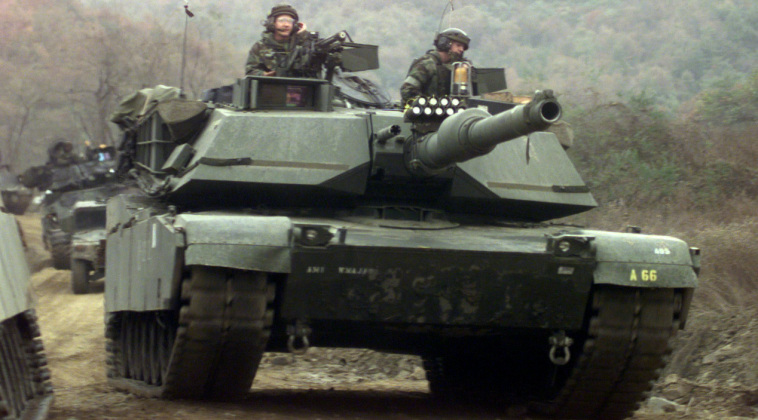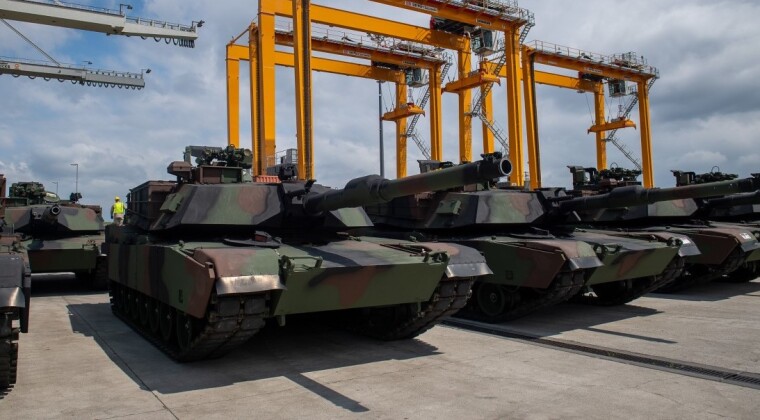News
Who Is Operating Ukraine’s New Abrams Tanks? Presence of U.S. or Polish Contractors Likely
Following confirmation of the delivery of the first American M1A1 Abrams tanks to the Ukrainian Army on September 25, the means by which the new vehicles will be operated has been widely discussed. Ukrainian, Western and Russian sources have widely predicted that, following major losses among American supplied Bradley fighting vehicles, German Leopard 1 and Leopard 2 tanks, the British Challenger 2 tanks, Ukraine will hold its Abrams tanks back from frontline engagements. Head of the Ukrainian Army’s Main Intelligence Directorate Kirill Budanov provided a strong indication of this when he warned a week before the first Abrams tanks arrived that the vehicles may not last long in combat unless reserved for use in very specific kinds of operations. He highlighted that if the American tanks were deployed “on the front line and just in a combined arms fight, they will not live very long on the battlefield.” Beyond the question of what operations the tanks will participate in, it has been less widely considered which personnel will operate Ukraine’s new American vehicles, with the circumstances of the deliveries and the preceding use of Ukrainian armour indicating that foreign contractors, and possibly even active duty personnel from NATO militaries, may play major roles.

The Abrams is a close contender for the title of the world’s most high maintenance tank class, with the vehicles weighting 70-80 tons depending on their configurations and having famously maintenance intensive gas turbine rather than diesel engines. To put this weight in perspective, the Russian Army’s top operational tank the T-90M weights only 46 tons or around 40 percent less. Former French Army Leclerc battalion commander Yann Boivin was thus one of many to highlight that Abrams tanks could quickly become a danger to their operators if not maintained quickly and properly, stressing: “The real drawback of the American tank is the high level of maintenance and logistics required. Servicing turbine engines requires a far better trained personnel than servicing diesel ones.” To maintain the complex vehicles, Ukrainian personnel appear to have had far from sufficient time for adequate training, with U.S. Army crew requiring 22 weeks of training and maintenance personnel up to 34 weeks. Becoming an Abrams repairman requires scores within the top 99th percentile of the Armed Services Vocational Aptitude Battery (ASVAB) test, the top 88th percentile of the Mechanical Maintenance or the 92nd percentile of the General Technical test, for applicants, which provides an indiction of the rigorous nature of the task.

The almost certain lack of sufficient training was widely observed by Russian experts, with retired Russian Army colonel and tank specialist Viktor Litovkin noting: “It’s supposed to be eight months of training, but they want to do it in 12 weeks – three months. This is something out of the realm of fantasy… “It’s supposed to be eight months of training, but they want to do it in 12 weeks – three months. This is something out of the realm of fantasy.” He elaborated: “A good tankman knows his machine from top to bottom, he has to know it through and through,” the observer said. “How long has it been since you’ve seen a Ukrainian tank driver who knows engineering and military terminology-specialised English? I can’t imagine that there are many such people in the ranks of the Ukrainian Armed Forces. Translation is not just a matter of inconvenience, but of perception – everything inside the tanks is in English, including instructions and manuals. So the language barrier is quite significant.” He thus speculated that Western contractors could be responsible for operating the tanks – raising the possibility that Polish contractors were likely to be responsible since the Polish Army itself operates Abrams tanks. Poland received its first company of Abrams tanks in July.

There are significant precedents for foreign contractors operating Abrams tanks and other complex hardware in the Ukrainian theatre, which has been critical to allowing the Ukrainian Army to absorb significant quantities of new Western hardware in a fraction of the time it would take to train local personnel to do so effectively. A notable example was the Patriot missile batteries dispatched in a far shorter time than it would have taken to train Ukrainian operators, with foreign contractors widely thought to be operating the assets. Contractors from across the Western world have been widely involved in combat operations in Ukraine, with one of the most notably examples being the deployment of British Royal Marines for frontline combat roles from April 2022. Beyond contractors, ideologically motivated volunteer units drawing personnel from across the Western world are made up of personnel with significant military experience allowing them to operate complex hardware. In late May, for example, the Polish Volunteer Corps were seen operating Ukrainian tanks, armoured vehicles and even Mi-8 helicopters in an armoured thrust into Russia’s Grayvoron District. This included the use of American HMMWV armoured vehicles. More recently on September 24 a Russian reconnaissance team reported the capture of a German speaking tank crew after destroying a Leopard tank in Ukraine’s Zaporozhye region, with the serviceman stating when surrendering that he was not a mercenary contractor but a member of the Bundeswehr. With Poland and the United States being the Abrams’ only operators within NATO, the two and the former in particular are considered most likely to have provided the personnel to help operate the tanks, potentially in the expectation that Ukrainian personnel play a greater role when given more time.












